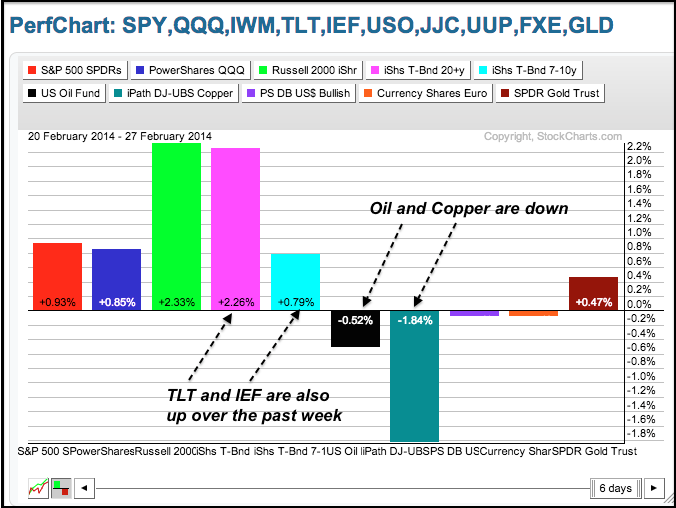Buying pressure continues to outpace selling pressure as the major index ETFs moved higher on Thursday. The Russell MicroCap iShares (IWC) led the way with a .88% gain. The Russell 2000 ETF (IWM) is leading the major index ETFs with a 2.33% gain over the past week. Among the sectors, the Technology SPDR (XLK) and the Materials SPDR (XLB) provided upside leadership for the day. XLK has provided upside leadership year-to-date and remains the second strongest sector. The Utilities SPDR (XLU) declined after reports that Elon Musk was going to make the power grid obsolete with battery utopia. There are no signs of underlying weakness in the stock market right now. The overbought condition of the major index ETFs is the only negative, and this is actually a positive because it takes strong buying pressure to become overbought. Outside of stocks, I am concerned with continued strength in the 20+ YR T-Bond ETF (TLT) and wonder if the Treasury market sees something the stock market doesn't. Treasuries are quite sensitive to the economy and there are several key economic reports on deck next week, including the employment report next Friday.
**This chart analysis is for educational purposes only, and should not
be construed as a recommendation to buy, sell or sell-short said securities**
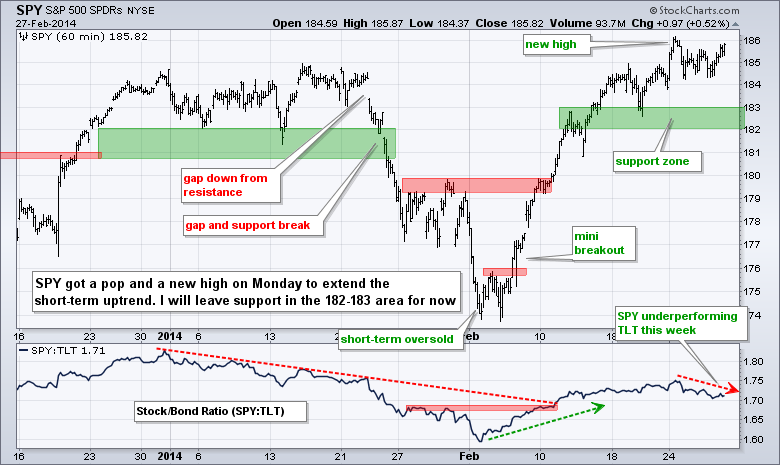
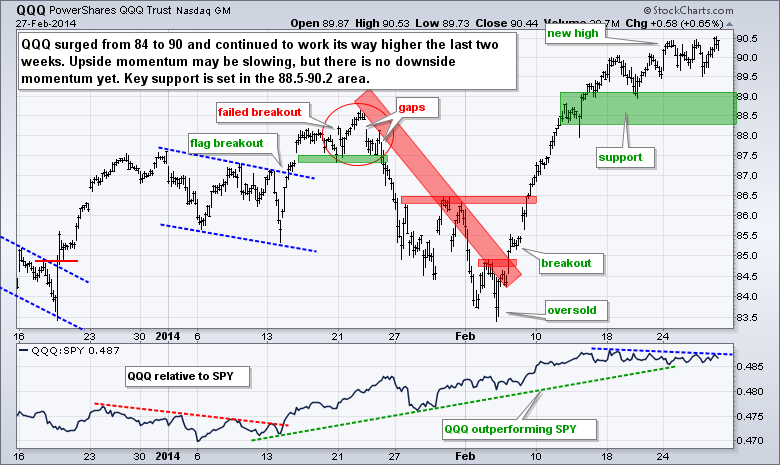

**************************************************************
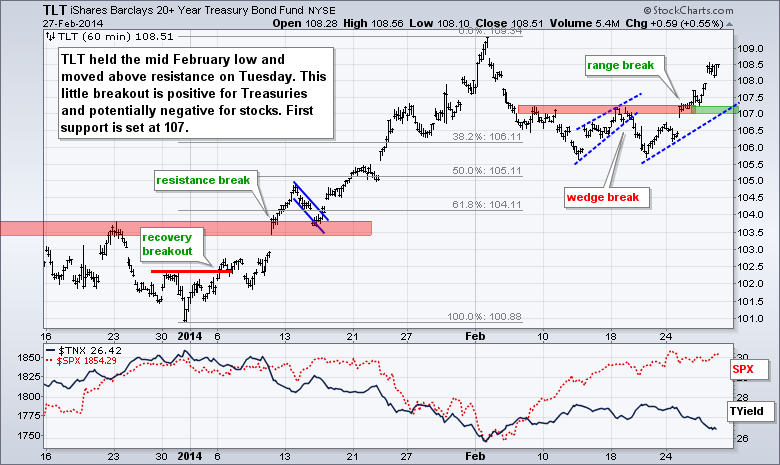
**************************************************************
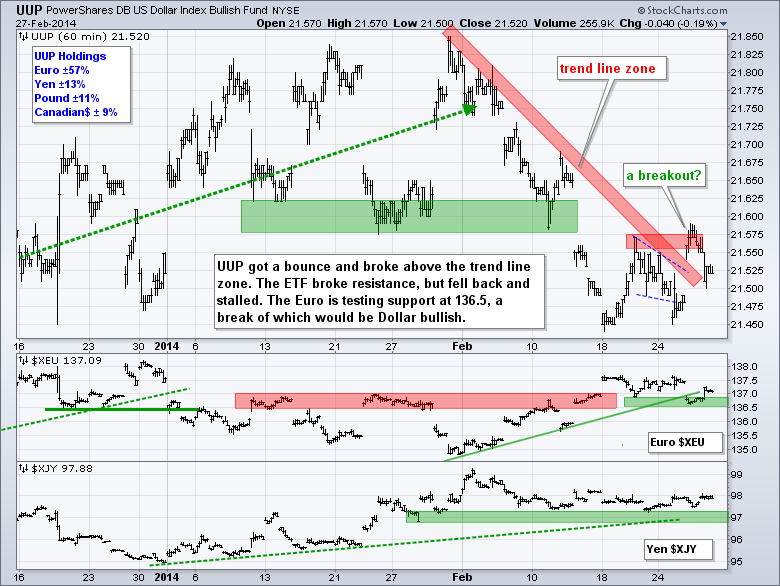
**************************************************************
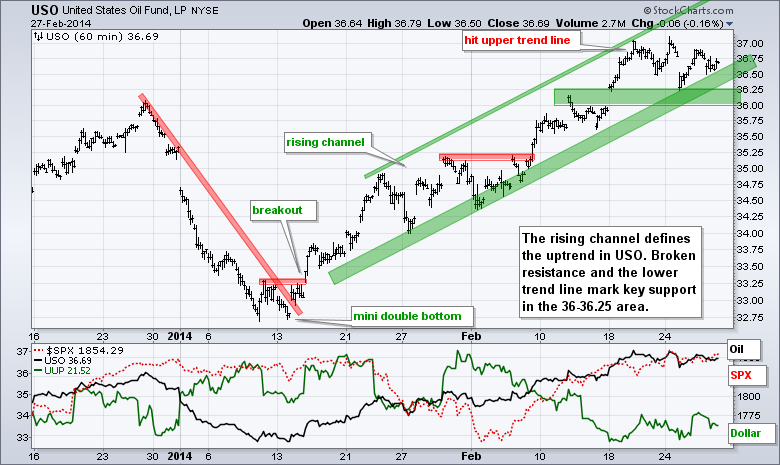
**************************************************************
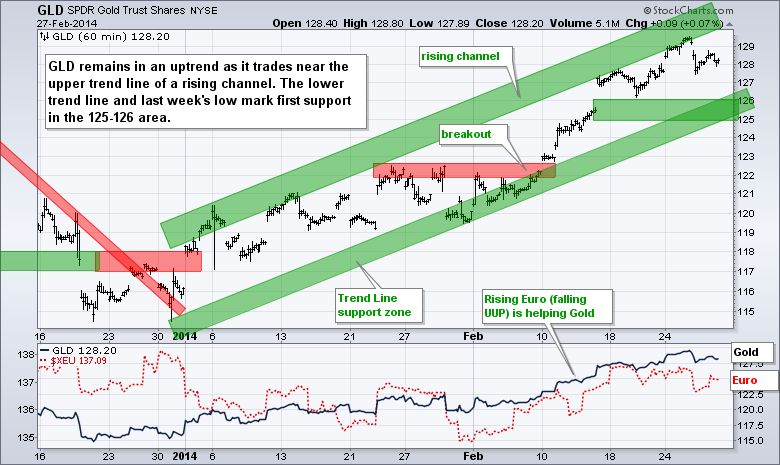
***************************************************************
Key Reports and Events (all times Eastern):
Fri - Feb 28 - 08:30 - GDP
Fri - Feb 28 - 09:45 - Chicago PMI
Fri - Feb 28 - 09:55 - Michigan Sentiment
Fri - Feb 28 - 10:00 - Pending Home Sales
Charts of Interest: Tuesday and Thursday
This commentary and charts-of-interest are designed to stimulate thinking. This analysis is
not a recommendation to buy, sell, hold or sell short any security (stock ETF or otherwise).
We all need to think for ourselves when it comes to trading our own accounts. First, it is
the only way to really learn. Second, we are the only ones responsible for our decisions.
Think of these charts as food for further analysis. Before making a trade, it is important
to have a plan. Plan the trade and trade the plan. Among other things, this includes setting
a trigger level, a target area and a stop-loss level. It is also important to plan for three
possible price movements: advance, decline or sideways. Have a plan for all three scenarios
BEFORE making the trade. Consider possible holding times. And finally, look at overall market
conditions and sector/industry performance.

